After 12 years of consultation and planning with numerous environmental and urban studies completed, it’s time to get shovels in the ground, say proponents of the 365-hectare Cap Nature Pierrefonds West Project on the West Island in Montreal.
The project, from owner-developer Cap Nature Pierrefonds West, includes 5,500 units of mixed-density housing abutting a significant natural area with wetlands and forest.
The environmental sensitivity of the area has led to extensive study by the province, the City of Montreal and the proponents since 2005 — "piles of studies," said Pierrefonds West spokesperson David Cliche, a former Parti Quebecois minister of environment.
"It is time to go ahead,’" said Cliche. "My clients have been very patient.
"This answers housing needs. It’s an intelligent, sustainable project, it’s high density, there’s a link to a train, a link to a 1000-hectare conservation area, there’s active walking."
Cliche said the developer hopes to obtain final planning approvals in the next year with a possible start to construction in 2018.
An open house for the project was held April 2.
Plans are for housing density to be 35 units per net hectare, with 10 per cent single family units, 35 per cent affordable units including significant social housing and a mix of townhouses and condos in buildings up to six storeys, some lining the extension of Pierrefonds Boulevard.
Three of the five partners in Cap Nature Pierrefonds West are experienced Quebec developers, said Cliche, naming Grilli Developpement Inc., Les Immeubles de l’Equerre Inc. and Developpement Pierrefonds Inc. The other partners are Quartier de l’Ouest de l’Ile S.E.N.C. and HPFCO Inc. Consultants who have participated so far include SM International, Amenatech, Tecsult, CIMA+, CDGU, WSP, Ducks Unlimited, Cogespro, Luc Denis Architectes and Groupe Grilli. From the City of Montreal, departments involved have included direction d’urbanisme, direction des grands parcs and direction de l’eau.
The developer would not assign a dollar value to the project, indicating rather in its recent media statement that it "will generate approximately $2 billion in economic growth and activity over the next 20 years." Cliche said it was estimated by Altus Group the market could accept 300 to 500 housing units per year, thus the possible 20-year build-out.
Other components of the project include three new elementary schools, eight daycare centres, offices and retail.
A key recent addition to the transportation and transit plan was the announcement in 2016 of CDPQ Infra’s $6-billion, 67-kilometre, 27-station electric automated LRT network proposal known as the REM that will include a station at Kirkland, 1.8 kilometres away from the Pierrefond West site. The developers hope to provide access to the new station via a two-lane dedicated transit "urban boulevard," said Cliche, to be situated on a right-of-way Transport Quebec purchased in the 1970s.
Supplementing the Kirkland station will be a "comprehensive mass transit grid," said the developer, and 10 kilometres of new bike lanes.
Cliche noted the City of Montreal identified the project as one of eight major developments it supported city-wide in 2015 as part of the Montreal Urban Agglomeration Land Use Development Plan. The city will provide basic water and sewer services and extend Boulevard Pierrefonds but otherwise the developer will be responsible for all new local roads.
The 180 hectares of protected natural zones included in the project will expand the L’Anse-a-l’Orme Nature Park, which forms part of the Riviere a l’Orme ecoforest corridor, creating a massive natural area of over 1,000 hectares.
The conservation demands of such regulators as the City of Montreal and the Ministry of Sustainable Development, the Environment and the Fight Against Climate Change have been onerous, Cliche said. He cited as an example of the thoroughness of the planning process the fact that the project’s Special Urban Planning Program has gone through 22 drafts.
"When you do a development project, you have impact," said Cliche, referring to environmental mitigation and enhancement measures. "The government of Quebec said you will have some impact, so what are you doing to compensate for that? So we agreed on a compensation package."
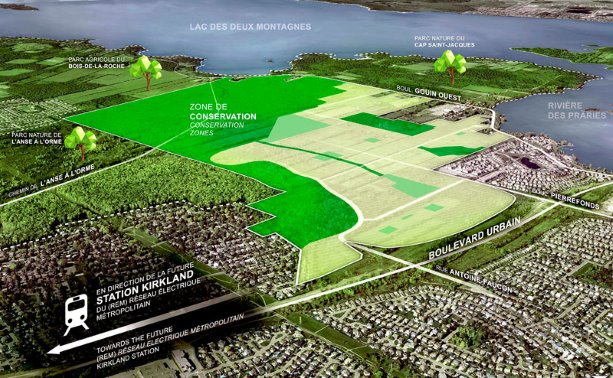


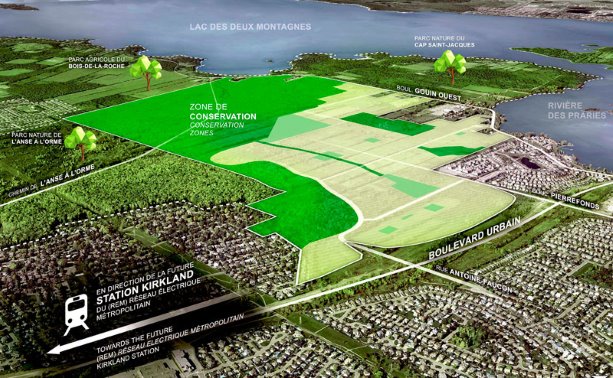
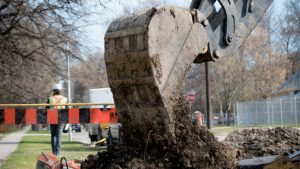

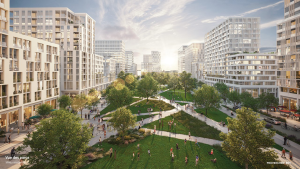
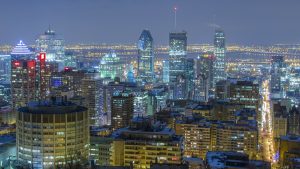

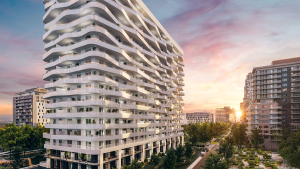
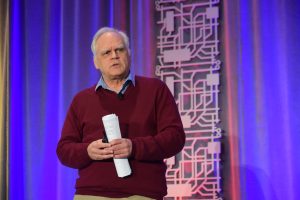

Recent Comments
comments for this post are closed